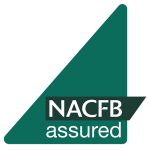By Matthew Dilks, bridging and commercial specialist, Clever Lending
For property investors seeking finance to fund development projects, understanding the differences between light, medium and heavy refurbishment loans is imperative, yet there remains a significant amount of confusion around what constitutes light and heavy refurbishment and the information required by lenders in order to secure funding.
The Importance of a Detailed Schedule of Works
Incorrect applications for refurbishment finance lending are common and cases are frequently reassessed and resubmitted accordingly, which is time-consuming and creates more work for brokers and lenders. Dispelling this confusion is important as it can help brokers and investors gain a better understanding of the requirements of lenders and create a more efficient and streamlined application process.
In the majority of cases, light refurbishment typically refers to cosmetic updates to a property such as plastering, painting or new flooring or the replacement of fixtures and fittings such as a new kitchen or bathroom.
This means the majority of lenders will not accept any structural work or work that requires planning permission, permitted development or building regulation approval for light refurbishment bridging loan applications, as developments of this kind would be classified as heavy refurbishment.
In many light refurbishment cases, there is often a wrongly-held belief that because a client may not require the lender to fund any building costs, the lender will not ask for proof of funds for the refurbishment costs.
However, this is not actually the case and the reality is that a full schedule of works is one of the most important factors for investors to consider when applying for all types of refurbishment finance, including both light and heavy.
Similarly, in many heavy refurbishment cases, it is often the expectation of clients that they will receive a quote for a build on the back of cursory and approximate figures for the works, but again, a full schedule of works is imperative.
This should contain details such as the work to be undertaken, how much each element will cost, how long it will take and the inclusion of any contingency fund that can be used in the event of any delay or overspending that may occur during the development.
In heavy refurbishment cases in particular, clients always need to establish the current value of the site, demonstrate a good understanding of the cost of the refurbishment works and have realistic expectations about timings, especially as lenders will not complete until planning permission has been granted.
One important consideration that applicants don’t always take into account is that if the build costs are high, the building works are large compared to the original property, or if the majority or all of the property is being knocked down, then this will then be classed as a full development. This means rates will increase in line with the level of information required by the lender.
Another fundamental factor to consider in all aspects of refurbishment finance is Gross Development Value (GDV). This is a significantly misunderstood aspect of the refurbishment finance sector and many clients often wrongly assume that lenders will lend off the GDV for the day one maximum loan rather than the current value for the day one lend.
Understanding Gross Development Value (GDV)
Understanding this difference is critical. GDV is calculated based on the market conditions prevailing at the date of the valuation, and may also be based on an analysis of recent property transactions for similar properties in the area of the development.
This can include asking prices, sale prices, information provided by letting agents or estate agents, or assessments provided by development surveyors. It may also be calculated as part of an initial development appraisal and may then be continually assessed to help determine whether the project is likely to be, or has been profitable.
As with all bridging loans, the exit strategy of any refurbishment finance loan is critical, especially in these more economically challenging times and should hopefully demonstrate that the investor has a realistic understanding of the market. In some cases, two exit strategies will be preferable to account for any change in circumstances.
One final aspect to also keep in mind is that most lenders will typically charge an exit fee and that in ‘full’ development finance cases, costs such as rates, valuations and quantity surveyor re-inspection fees will increase as the project unfolds.
It is therefore advisable for investors to try and keep their project within the light to heavy refurbishment categories as this will mean reduced funding costs, less underwriting time and a wider choice of lenders.


